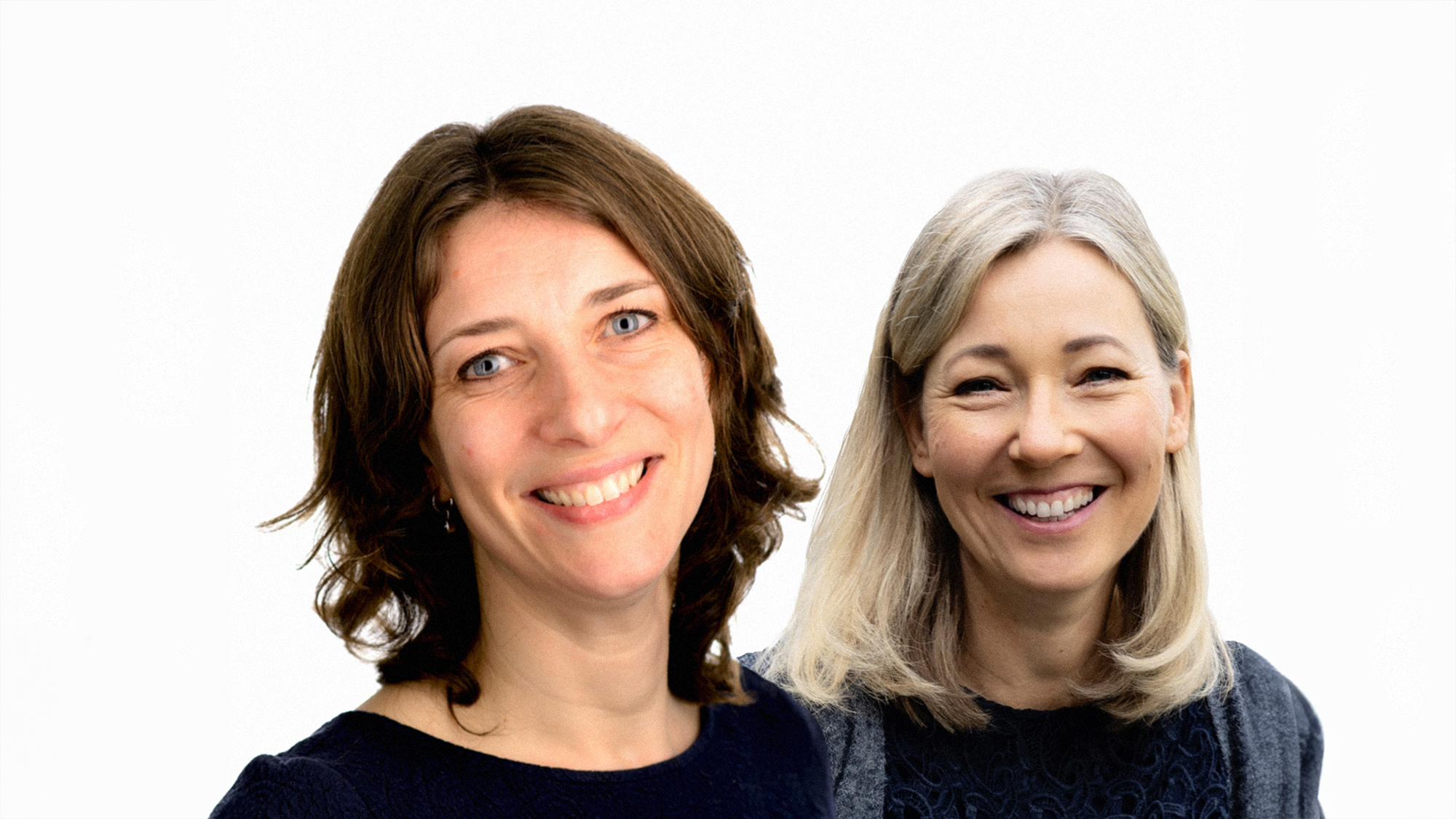“Goals Shift When People Get Older.”

Dorien and Marianne, what prompted you to write your recent research paper, “Growth Motives and Learning Behaviors among Older Workers?“
Dorien Kooij: What struck us was the apparent inconsistency of two different kinds of findings: Some studies suggest that growth motives decrease with age, whereas other studies indicate that older workers still want to learn, but in a different way. Our paper seeks to explore these inconsistencies.
A common stereotype is that older workers are less interested in learning and growing than their younger counterparts. Is this true?
Dorien Kooij: Studies support this stereotype – with the caveat that these studies use traditional measures within a system that does not tailor its learning offerings to different kinds of workers. In other words, the setting in which these studies take place is already biased against older workers.
It always depends on what you measure…
Dorien Kooij: That’s right. If a training is not adapted to the needs of older workers, then they may not want to participate.
So how has workplace learning traditionally been measured? In what ways does the conventional definition of workplace learning as “intentional processes of knowledge acquisition guided by educators” fail to capture important aspects of workplace learning?
Marianne van Woerkom: There is agreement that workplace learning is not the same as organized forms of learning or training. However, it’s hard for researchers to define learning without including some formal aspects. Even when researchers define workplace learning more broadly, what will stick is still the sense that learning is a goal-oriented process that is more or less structured or that training is a process that is aimed at advancement. All these characteristics are borrowed from a formal learning environment, but they do not necessarily describe what I call a more ‘natural’ learning process.
In what ways have current measures of work-related learning perpetuated stereotypes about older workers? How may these metrics inhibit learning among older workers?
Marianne van Woerkom: A commonly used metric for evaluating workplace learning is training participation. Researchers who developed additional measures for workplace learning still work from the assumption that workplace learning is a goal-oriented and structured process, something that people are aware of. This poses a challenge when assessing learning among older workers. Older workers are less likely to perceive their learning as acquiring entirely new knowledge due to their extensive experience spanning several decades. Therefore, they are often more critical consumers of ready-made trainings that are not clearly connected to their own experiences and skills. Additionally, older workers tend to build upon their existing knowledge, making it harder for them to recognize their own learning process and label it as such. Instead, they may say, ‘I’m just interested in this or curious about that, or I like to discuss a topic with other people to get different perspectives on it.’ Instead of framing it as ‘learning,’ they will just see it as part of their job.
If a training is not adapted to the needs of older workers, then they may not want to participate.
Dorien Kooji
What kinds of learning do older workers tend to seek out?
Marianne van Woerkom: Older employees like to build upon their existing knowledge. They are guided by an intrinsic interest in expanding their knowledge on particular topics. Also, they want to build on their existing strengths rather than learning something entirely new.
Dorien Kooij: Older workers also like to share their knowledge and explain things – and doing so helps them learn. When you explain something to someone else, it prompts you to think independently and identify gaps or inconsistencies in your understanding. This process fosters a deeper comprehension of the subject matter. This tendency to share knowledge has been found to be more important and prevalent among older workers compared to younger ones.
Marianne van Woerkom: Indeed, explaining is one aspect, but it’s also simply discussing. Explaining is a one-way process where there is a learner and an explainer. But older workers also enjoy simply discussing different opinions and perspectives, which is a form of learning. It’s more of a collective learning process where both parties benefit.
It’s hard for researchers to define learning without including some formal aspects.
Marianne van Woerkom
Would it be fair to say that while younger workers’ learning behavior is more goal-oriented (which can also be more easily measured), older workers tend to see learning more as a process of refining their skills?
Marianne van Woerkom: The goals of older workers are more often related to work tasks or pursuing personal interests rather than directed toward learning outcomes. They do not often label their activities as ‘learning’ and do not have specific learning goals in mind. Instead, their focus is on work-related goals such as improving processes or understanding how things work.
Dorien Kooij: Research confirms that goals shift when people get older. Older workers shift their focus away from acquiring new knowledge and towards socio-emotional goals. This includes seeking positive experiences and engaging in activities with others. It is not that older individuals are less goal-oriented but that they pursue different goals.
Marianne van Woerkom: Younger workers tend to be more future-oriented. They are willing to invest significant time and energy in acquiring new knowledge because they think that doing so will benefit them in the future. In contrast, older workers are more focused on improving something in the here and now and seek personal satisfaction or connection with others.
Older employees like to build upon their existing knowledge.
Marianne van Woerkom
What are some alternative ways of measuring learning? What kinds of metrics could capture late adult development more accurately?
Dorien Kooij: We are in the process of developing new ways of capturing learning experiences. Our approach focuses on strengths and interests-based learning: ‘What are people good at? What are they interested in? And how do they deepen their knowledge and skills in these areas?’ This approach may provide a new avenue for measuring learning.
Would this approach perhaps involve the use of questionnaires?
Marianne van Woerkom: Possibly. But you need to ask different questions. For instance, not all learning is purely cognitive or about acquiring information. Learning also involves developing skills in emotional intelligence, such as dealing with your emotions or the emotions of others, such as clients or coworkers. Furthermore, learning includes self-reflection on professional identity and priorities, such as what kind of teacher or nurse one aspires to be and what values are important. Our current measurement methods, however, fail to capture these types of learning processes.
Especially now in the age of automation, social-emotional skills are becoming all the more important. Companies want to train their workers in these skills. But how do you measure progress in soft skills? How can an L&D department justify allocating a significant budget to such training? I am curious if you have any insights on how companies can go about measuring the development and refinement of social-emotional skills?
Marianne van Woerkom: Learning is also about change. As individuals, we constantly evolve, and our perspectives and priorities may shift over time. Instead of solely focusing on the end product of learning, we should try to capture the learning process itself. By understanding how individuals actively shape their professional identities, we can explore the potential outcomes and benefits. For example, we could investigate whether nurses who actively engage in defining their professional identity are more likely to stay engaged and committed to their work, reducing the likelihood of dropping out. By initially capturing the learning process and then connecting it to important outcomes, we can gain valuable insights without prematurely fixating on specific outcomes during the learning process.
Instead of solely focusing on the end product of learning, we should try to capture the learning process itself.
Marianne van Woerkom
Dorien Kooij: Of course, companies want to know the business case for investing in learning initiatives. In the case of older workers, the tendency for many to drop out or become unmotivated as their abilities and motivations change is a significant concern. However, by engaging in a process of learning that allows them to redefine their professional identity and adapt their job responsibilities accordingly, they may be more likely to remain in the workforce for a longer period. The ability to retain experienced employees and ensure a better fit between individuals and their job roles can be seen as a valuable business case for companies to invest in learning. It is my hope that companies recognize the potential benefits of supporting different types of learning to retain and engage older workers in the workforce.
Marianne van Woerkom: One challenge is that learning is often an implicit process – a process people are not aware of. And so, how do you measure something that people are not aware of? Indeed, you need to be very careful when defining what you are measuring.
Intergenerational learning has traditionally been seen as the one-directional transfer of knowledge from older to younger workers. You write that this is not the case. Can you elaborate?
Marianne van Woerkom: I’ve got plenty of personal examples where I ask my younger colleagues to help me with something – especially technical things, such as the latest statistical techniques or AI tools. Conversely, I have found that younger colleagues often turn to me for guidance on writing theoretical papers or navigating teaching-related challenges. This highlights the unique knowledge that each generation brings to the table. Furthermore, consulting younger colleagues on their perspectives and experiences as individuals in their 20s or 30s can provide valuable insights into their worldview.
Gaining these kinds of understandings will then help you work better with people from different generations, improving collaboration…
Dorien Kooij: Yes, and we even did a study on that. In the study, we formed pairs of younger and older workers and enrolled them in a training program. After the training, we conducted measurements to assess the extent of knowledge transfer and contact quality. The results were intriguing. It became evident that when participants actively acknowledged and leveraged their individual expertise, focusing on what each person knew and how they could learn from one another, knowledge transfer and contact quality increased significantly.
So again, the results of the training program can be measured in a more indirect way, such as by showing that being in the training together improved collaboration afterward….
Marianne van Woerkom: Yes. And I think people like learning to be a process of give-and-take. It’s not solely about one person always seeking knowledge from another. It’s important to create an environment where people have the opportunity to help and support each other. This collaborative approach not only enhances the learning experience but also strengthens relationships between colleagues.
The ability to retain experienced employees and ensure a better fit between individuals and their job roles can be seen as a valuable business case for companies to invest in learning.
Dorien Kooij
What advice would you give to L&D departments that seek to increase the participation of older employees in their learning initiatives?
Dorien Kooij: Perhaps you would just want to give them more autonomy and trust, and encourage them to keep learning on the job. That might be more valuable than enrolling them in formal learning initiatives.
Marianne van Woerkom: Again, it depends how you define ‘learning initiative.’ For instance, organizing a meeting or workshop where people can discuss their professional identities and their professional evolution can be seen as a learning initiative – but perhaps you wouldn’t call it this way. The term ‘learning initiative’ can evoke thoughts of formal education or training, which may deter some people from participating. Rather than labeling it as such, you might just want to create opportunities for people to reflect, share knowledge, and engage in discussions.
I guess another approach could be to redefine the term ‘learning’ at the workplace as a process-oriented activity that has little to do with ‘going to school’…
Marianne van Woerkom: During my doctoral research on workplace learning, I interviewed many people on the topic. I would start off by explaining what workplace learning was, but people would immediately start talking about training programs. Many people still equate learning with school.
Dorien Kooij: Changing this perception will take time.
In your opinion, what would be the main ingredient of a great organizational learning culture?
Marianne van Woerkom: What is really important is to find out how you can best support people and meet their needs. Don’t impose mandatory classes or training programs on them. While our discussion has focused mainly on older workers, the same principles apply to younger individuals as well, albeit to a lesser extent. Also, young people struggle with learning that doesn’t align with their existing knowledge base. Learning is rarely about acquiring an entirely new knowledge base but about building upon an existing frame of reference.
Dorien Kooij: Trust and time are important ingredients of an effective learning culture. It’s very hard to learn if you are so preoccupied with daily work tasks that you don’t have time to reflect. Organizations would need to enable people to designate some time for reflection or lighten their workload just a little bit. You will also want to ensure that people feel supported and trusted to experiment and explore different approaches, even if mistakes are made. I think these aspects can greatly enhance the learning process.
About the authors:
Marianne van Woerkom and Dorien Kooij are professors at Tilburg University’s Department of Human Resource Studies and School of Social and Behavioral Sciences in the Netherlands.







